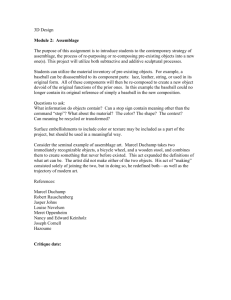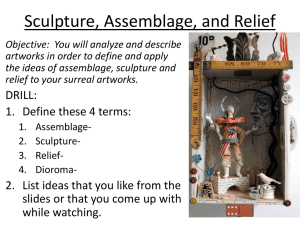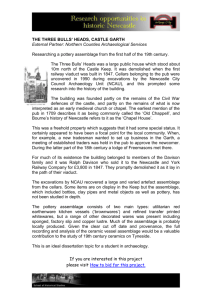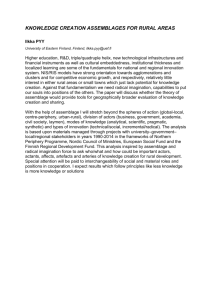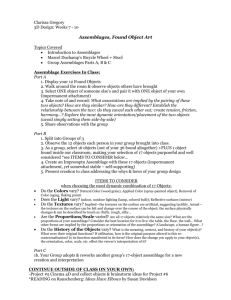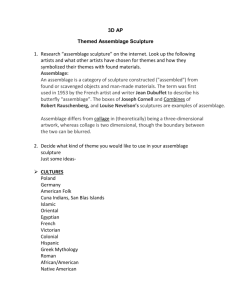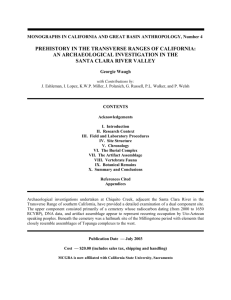Forrest Jarvi, Aaron Whittenburg: Sociology & Anthropology
advertisement
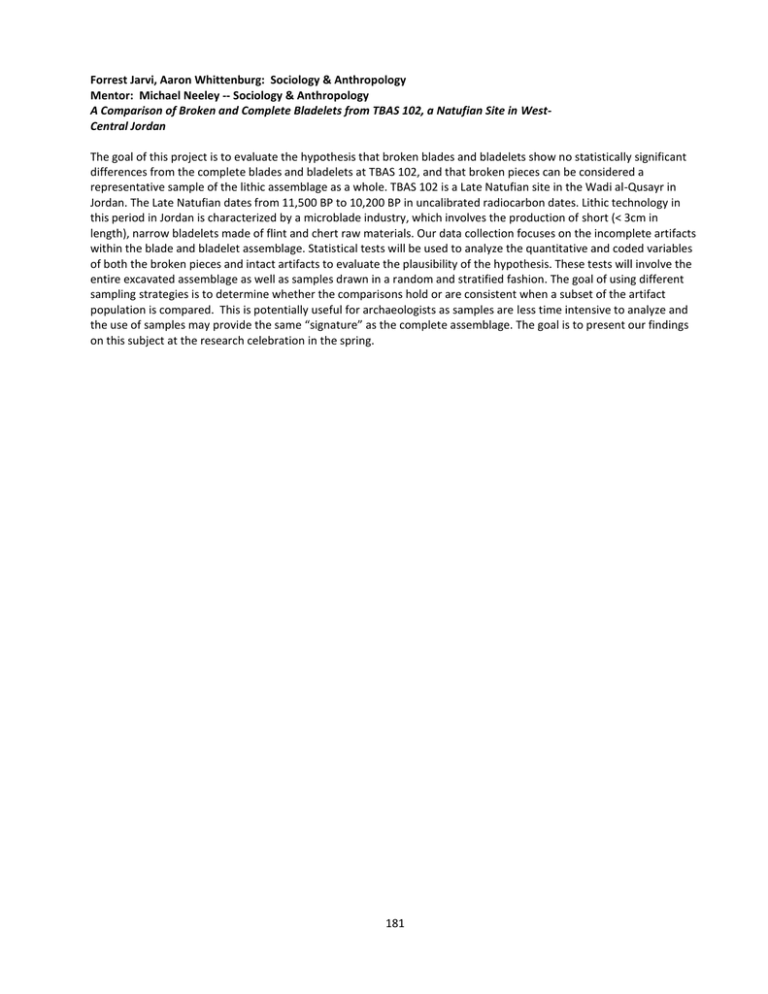
Forrest Jarvi, Aaron Whittenburg: Sociology & Anthropology Mentor: Michael Neeley -- Sociology & Anthropology A Comparison of Broken and Complete Bladelets from TBAS 102, a Natufian Site in WestCentral Jordan The goal of this project is to evaluate the hypothesis that broken blades and bladelets show no statistically significant differences from the complete blades and bladelets at TBAS 102, and that broken pieces can be considered a representative sample of the lithic assemblage as a whole. TBAS 102 is a Late Natufian site in the Wadi al-Qusayr in Jordan. The Late Natufian dates from 11,500 BP to 10,200 BP in uncalibrated radiocarbon dates. Lithic technology in this period in Jordan is characterized by a microblade industry, which involves the production of short (< 3cm in length), narrow bladelets made of flint and chert raw materials. Our data collection focuses on the incomplete artifacts within the blade and bladelet assemblage. Statistical tests will be used to analyze the quantitative and coded variables of both the broken pieces and intact artifacts to evaluate the plausibility of the hypothesis. These tests will involve the entire excavated assemblage as well as samples drawn in a random and stratified fashion. The goal of using different sampling strategies is to determine whether the comparisons hold or are consistent when a subset of the artifact population is compared. This is potentially useful for archaeologists as samples are less time intensive to analyze and the use of samples may provide the same “signature” as the complete assemblage. The goal is to present our findings on this subject at the research celebration in the spring. 181


